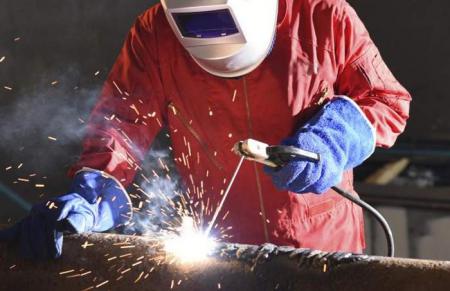

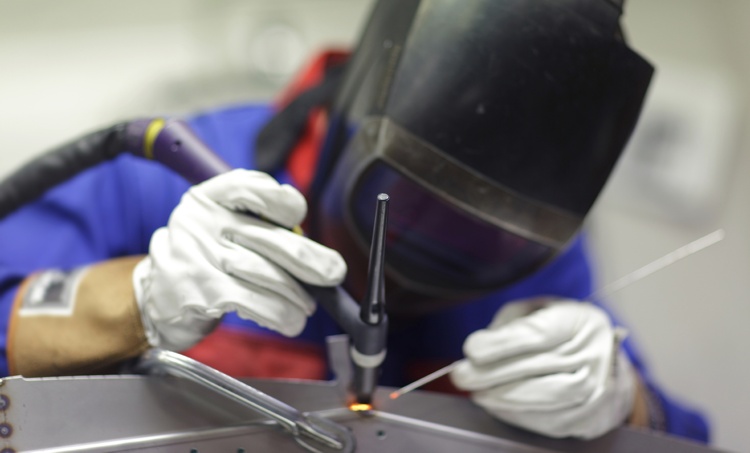
Have you ever wondered what machine is used to weld aluminum or how stainless steel welding is done? If you’ve ever admired those almost artistic weld beads with enviable perfection, you were likely witnessing work done using the TIG welding process, which is ideal for special projects requiring visible welds.
To avoid confusion, it’s important to clarify that this process is known both as TIG (tungsten inert gas) and GTAW (gas tungsten arc welding).
TIG welding is characterized by the use of a non-consumable tungsten electrode and shielding gas for the arc. Unlike other types of welding, this electrode does not add material to the weld bead or get consumed during the process, although it does experience minimal wear and needs to be replaced periodically.
This is the final link in the circuit. It’s the handheld tool that allows control of the arc.
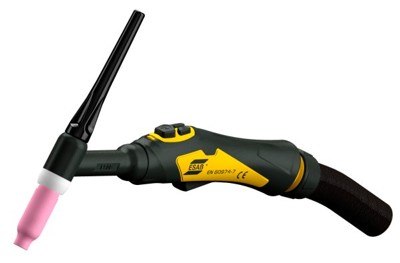
Some models feature a remote control for triggering and fine-tuning the electric current intensity. They may also have a knob to control gas flow.
Unlike the SMAW or MMA welding process, where the electrode has multiple functions, in the TIG process, the electrode has a single purpose: to produce the electric arc. To ensure the electrode doesn’t melt along with the weld, a material that withstands much more heat than steel was chosen—hence the use of TUNGSTEN, which has an incredible melting point of 3410 °C.

There are different tungsten alloys for specific uses and diameters suited to the working current. To learn more, we recommend reading the special article on tungsten electrodes, where you’ll learn, for example, which type of electrode is used to weld stainless steel, aluminum, etc.
This process uses a constant flow of inert gas to protect the arc and molten material from the violent oxidation that can occur when exposed to air at such high temperatures.

The most commonly used gases for arc shielding in this welding process are argon and helium, or a combination of both.
The nozzle is a ceramic tube (usually pink) that directs the gas flow toward the welding area.
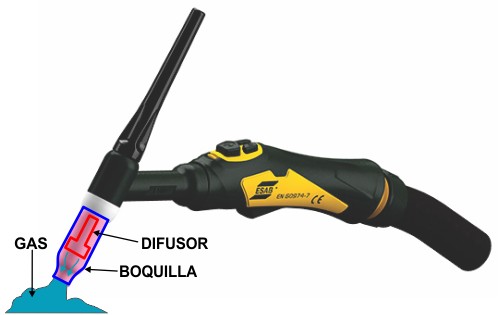
Adding a TIG LENS diffuser is optional and can significantly improve gas coverage while reducing gas consumption.

One of the main advantages of this welding method is its ability to work with a wide variety of materials, allowing precise control of filler material using a separate rod. This makes it possible to weld in any position and with the most challenging metals. It is especially effective for working with aluminum, alloy steels, magnesium, copper, nickel, and even titanium.
TIG welding is ideal for handling thin materials and performing delicate work that requires excellent aesthetic finishes. The absence of slag during the process improves the welder’s visibility and allows for clean, uniform welds. A well-finished weld bead significantly reduces the need for additional finishing tasks, resulting in greater productivity.
Additionally, this method produces weld beads that are more resistant and less prone to corrosion compared to other procedures, thanks to the protection provided by the inert gas, which prevents contact between the molten metal and oxygen.
The use of inert gas also minimizes the generation of fumes and spatter during the welding process, contributing to a cleaner and safer work environment.
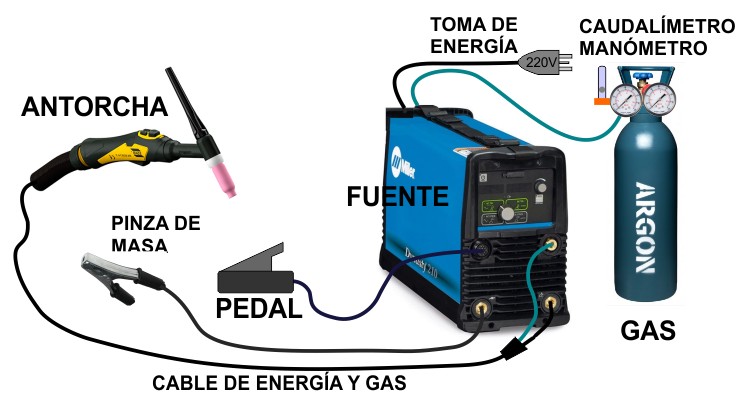
Some considerations regarding different connection and installation configurations:
Using a pedal is optional and greatly facilitates the task as it allows the adjustment of electric current without stopping the welding process. It also enables arc triggering and stopping.
This is also optional. If you have a basic torch, the current must be adjusted directly on the power source, and the gas flow must be regulated at the cylinder valve.
In the diagram, you can see that the gas circuit passes through the welder. This is because the equipment has an automatic internal valve that blocks gas flow when not welding. Smaller equipment does not have this mechanism, so the gas is connected directly to the cylinder’s flowmeter.
If you’re interested in exploring this welding technique, it’s recommended to start experimenting with a conventional inverter welder. If possible, a dual welder that allows both manual arc welding (MMA) and TIG welding would be even better. For this, you’ll need to purchase a welding torch and the necessary accessories, as well as a small argon gas cylinder. If your initial practice goes well and you feel comfortable with the process, you might consider investing in higher-performance equipment.
It’s important to note that, at first, it’s advisable to practice with steel, as welding aluminum is a more challenging and specialized process that requires additional skills and specific techniques. Mastering the process with steel will provide a solid foundation before venturing into welding more complex metals.
We hope you enjoyed this article.

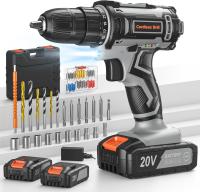
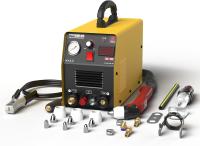

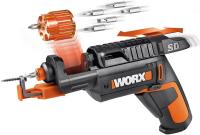
They are already part of the Job Board
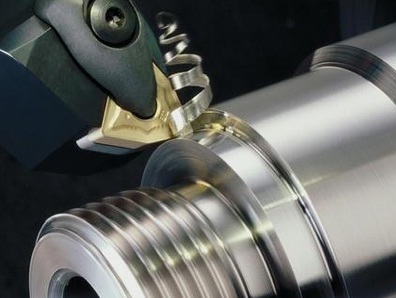


Relacionados:
